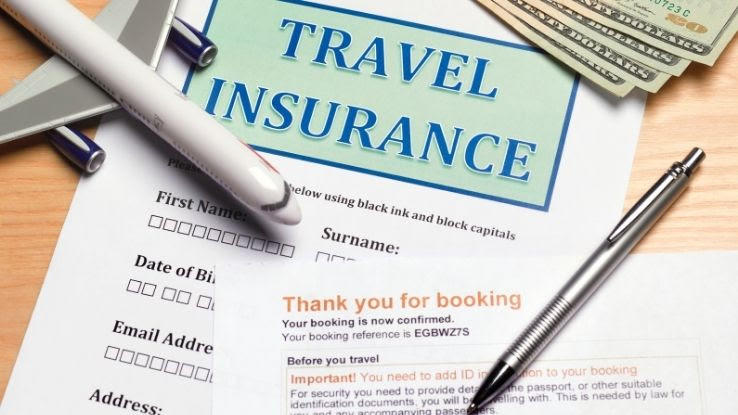The Single Strategy To Use For Pacific Prime
The Single Strategy To Use For Pacific Prime
Blog Article
Unknown Facts About Pacific Prime
Table of ContentsPacific Prime Things To Know Before You Get ThisThe Of Pacific PrimeHow Pacific Prime can Save You Time, Stress, and Money.The Greatest Guide To Pacific PrimeThings about Pacific Prime

This is because the data were accumulated for a period of solid economic performance. Of the approximated 42 million individuals who were without insurance, just about about 420,000 (concerning 1 percent) were under 65 years of age, the age at which most Americans end up being qualified for Medicare; 32 million were adults between ages 18 and 65, around 19 percent of all adults in this age group; and 10 million were kids under 18 years old, about 13.9 percent of all kids (Mills, 2000).
These quotes of the number of persons uninsured are produced from the yearly March Supplement to the Existing Populace Survey (CPS), performed by the Census Bureau. Unless otherwise noted, national price quotes of individuals without health insurance coverage and proportions of the population with various sort of insurance coverage are based upon the CPS, one of the most extensively made use of resource of price quotes of insurance policy protection and uninsurance prices.
How Pacific Prime can Save You Time, Stress, and Money.

Still, the CPS is especially useful due to the fact that it generates yearly estimates relatively rapidly, reporting the previous year's insurance protection approximates each September, and due to the fact that it is the basis for a regular collection of estimates for more than two decades, permitting analysis of fads in insurance coverage gradually. For these reasons, as well as the extensive use of the CPS in various other researches of insurance coverage that exist in this record, we count on CPS price quotes, with restrictions kept in mind.

The price quote of the number of uninsured people broadens when a population's insurance policy status is tracked for numerous years. Over a three-year duration beginning early in 1993, 72 million people, 29 percent of the U.S. https://experiment.com/users/pacificpr1me. populace, lacked coverage for a minimum of one month. Within a solitary year (1994 ), 53 million people experienced at the very least a month without insurance coverage (Bennefield, 1998a)
Six out of every ten uninsured grownups are themselves utilized. Although functioning does boost the likelihood that one and one's member of the family will have insurance policy, it is not an assurance. Also members of family members with two full-time wage earners have nearly a one-in-ten chance of being uninsured (9.1 percent without insurance rate) (Hoffman and Pohl, 2000).
Little Known Questions About Pacific Prime.
New immigrants account for a considerable percentage of individuals without medical insurance. One analysis has attributed a significant part of the recent growth in the dimension of the U.S. without insurance population to immigrants who got here in the nation between 1994 and 1998 (Camarota and Edwards, 2000). Current immigrants (those that concerned the United States within the past four years) do have a high rate of being uninsured (46 percent), however they and their youngsters make up simply 6 percent of those without insurance country wide (Holahan et al., 2001).
The partnership in between health insurance and access to care is well established, as documented later in this chapter. Although the connection between health and wellness insurance coverage and wellness outcomes is neither direct nor straightforward, a comprehensive clinical and health and wellness services research study literary works web links health insurance coverage to enhanced access to care, better quality, and improved personal and population health standing.
Levels of evaluation for analyzing the results of uninsurance. It focuses particularly on those without any kind of health insurance coverage for any kind of length of time.
Pacific Prime Fundamentals Explained
The problems dealt with by the underinsured remain in some respects similar to those encountered by the without insurance, although they are generally much less extreme. international travel insurance. Uninsurance and underinsurance, nevertheless, include noticeably various policy issues, and the approaches for resolving them may differ. Throughout this study and the 5 reports to follow, the main emphasis is on persons with no wellness insurance policy and hence no next support in spending for healthcare beyond what is available via charity and safeguard organizations
Health and wellness insurance policy is an effective variable influencing invoice of treatment since both people and physicians reply to the out-of-pocket price of services - http://tupalo.com/en/users/6478264. Wellness insurance coverage, however, is neither needed nor adequate to get to clinical solutions. The independent and direct result of wellness insurance policy coverage on accessibility to health and wellness solutions is well established.
Others will get the healthcare they need also without health insurance policy, by paying for it expense or seeking it from suppliers who offer care cost-free or at extremely subsidized prices. For still others, health insurance policy alone does not ensure invoice of treatment as a result of other nonfinancial obstacles, such as a lack of healthcare providers in their neighborhood, minimal access to transportation, illiteracy, or etymological and social differences.
Pacific Prime Fundamentals Explained
Formal study about uninsured populations in the United States dates to the late 1920s and early 1930s when the Committee on the Expense of Healthcare created a collection of records concerning financing physician workplace gos to and hospital stays. This concern came to be significant as the varieties of medically indigent climbed during the Great Depression.
Report this page